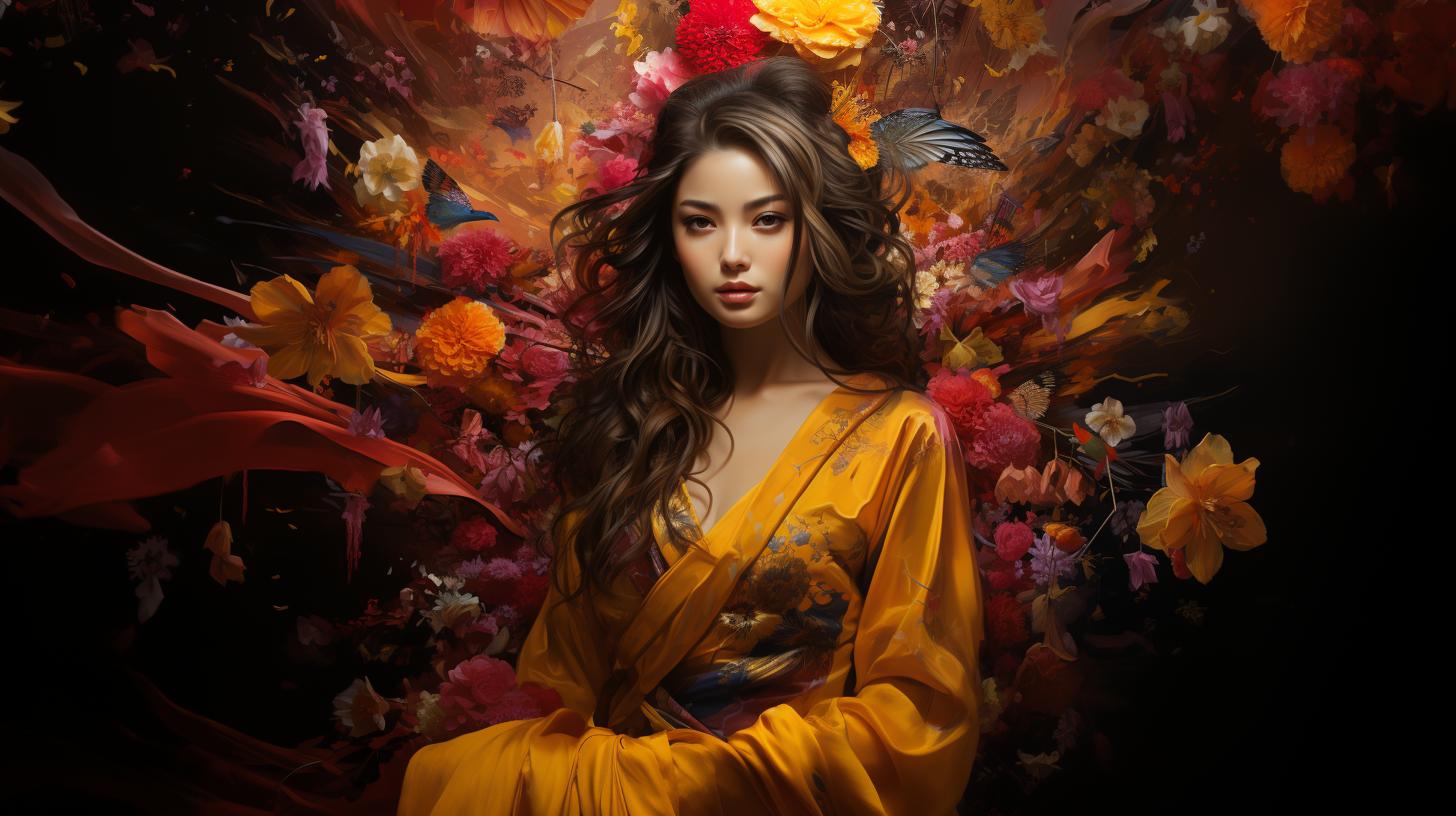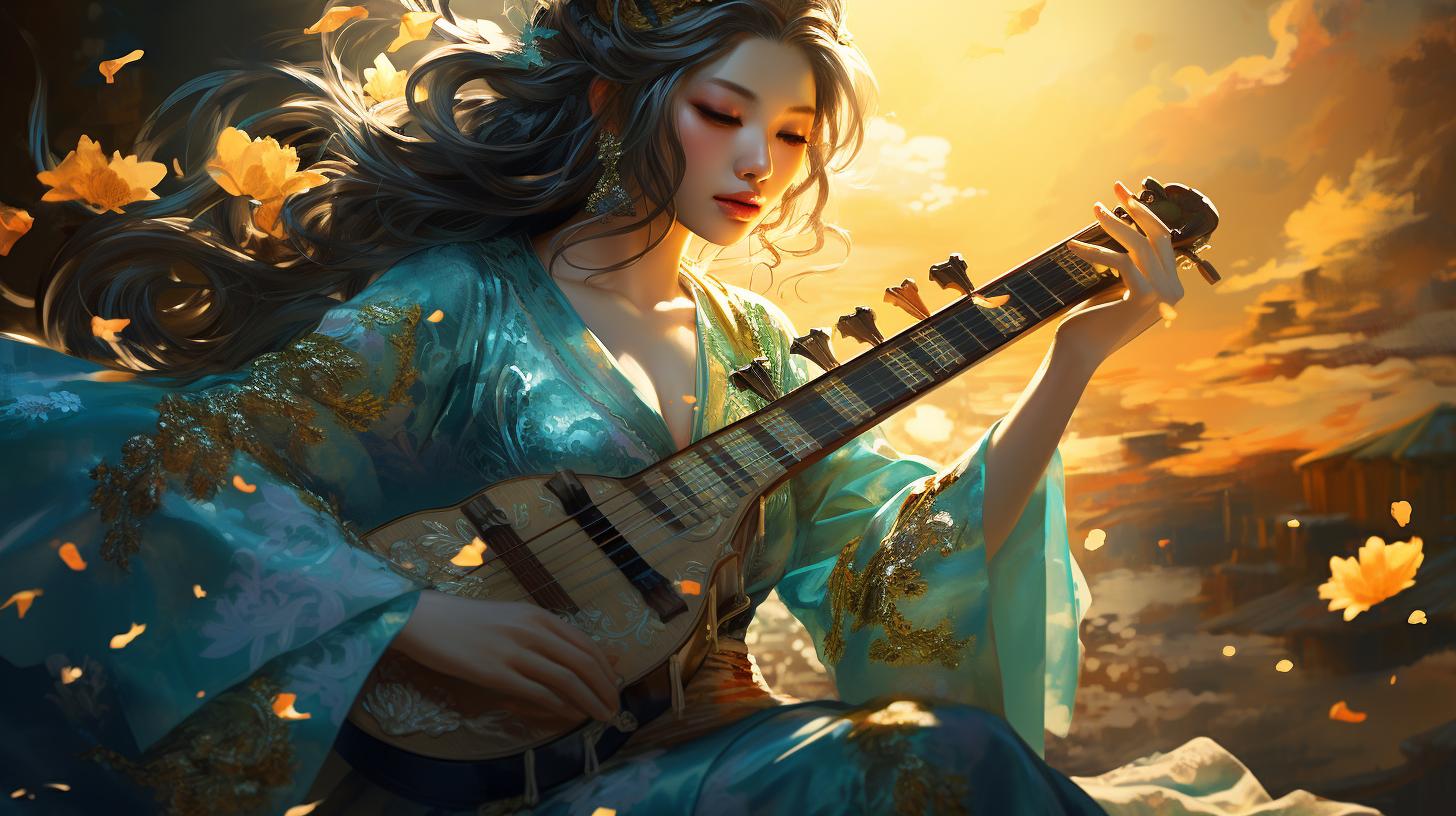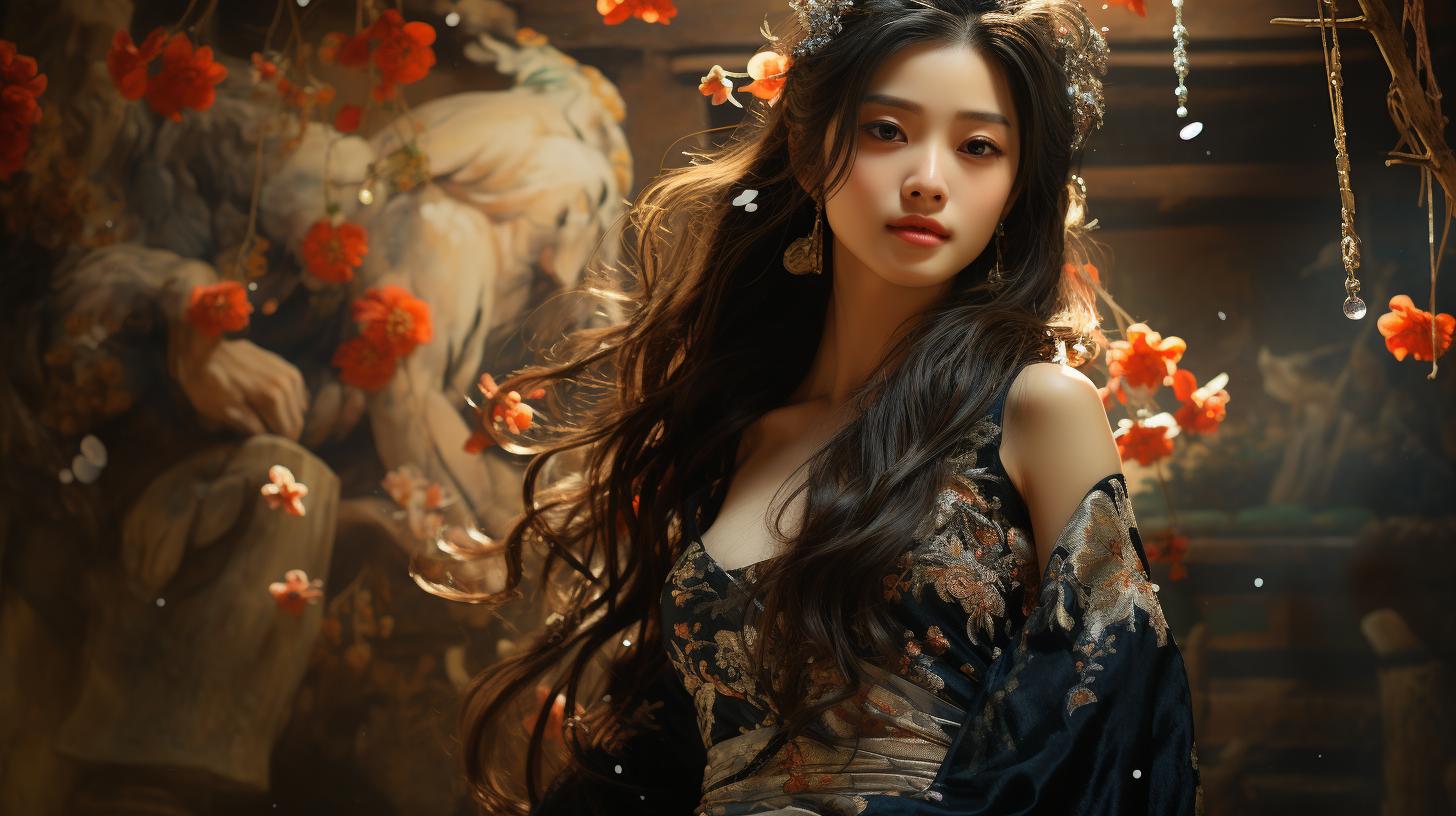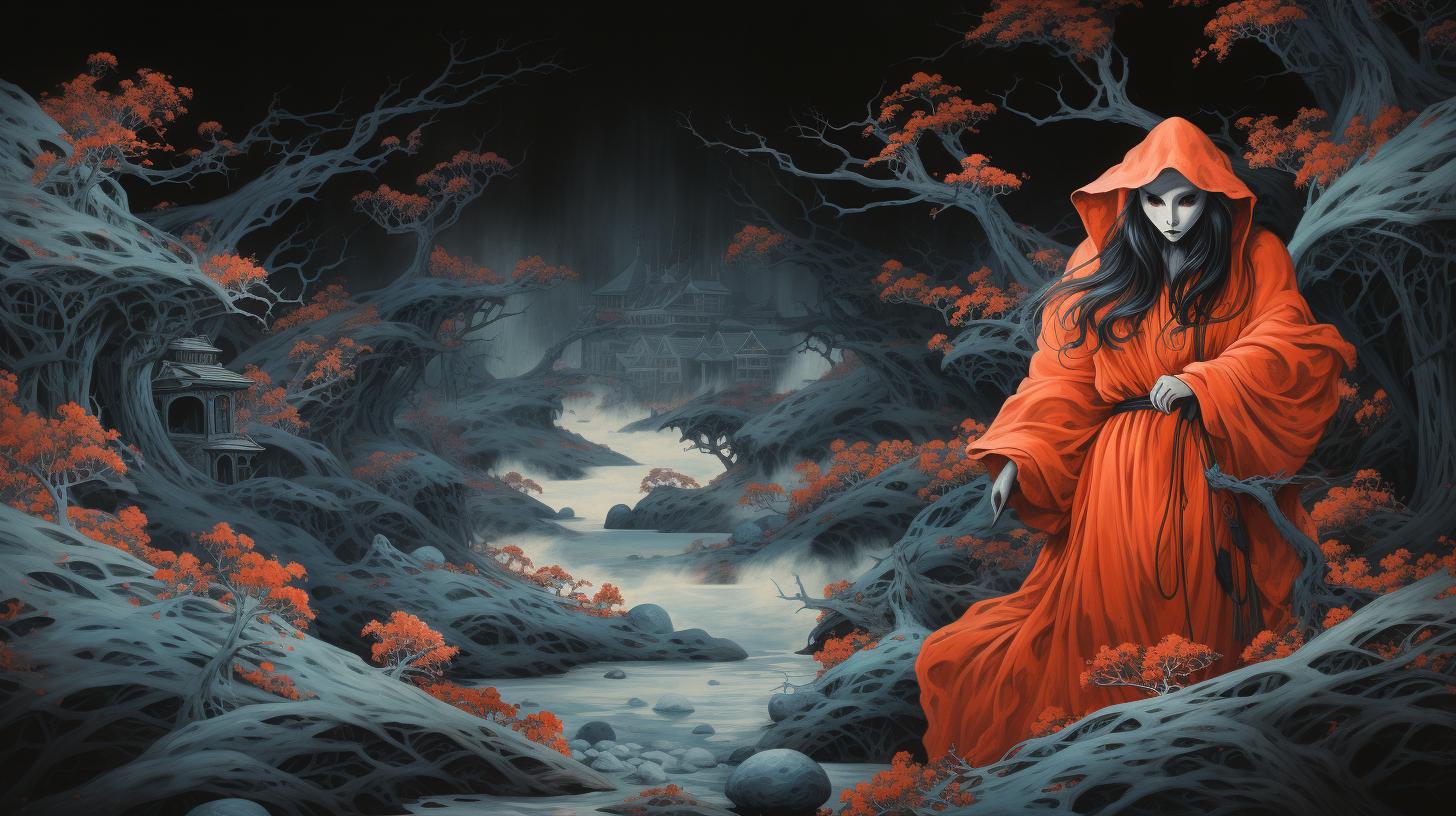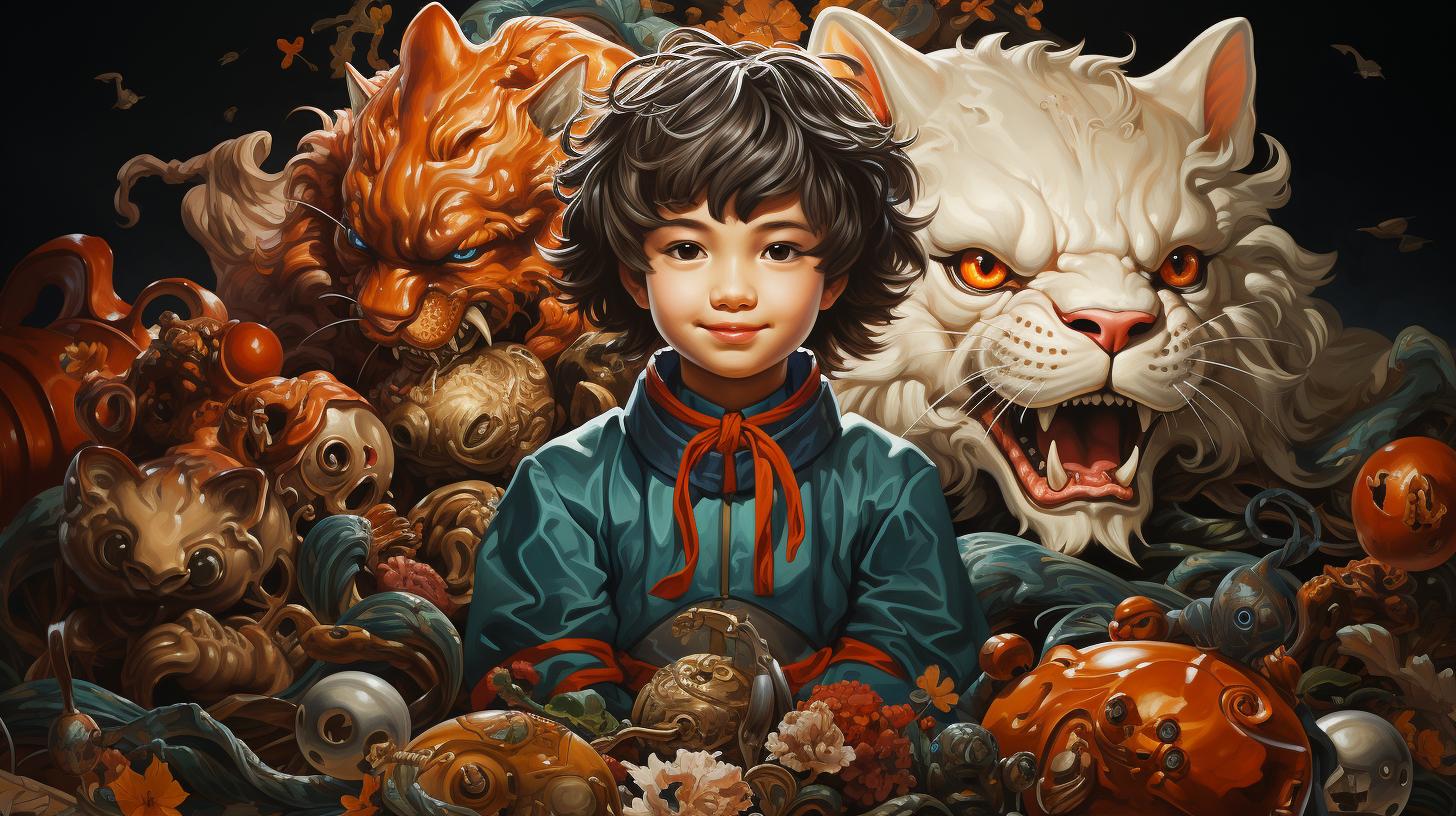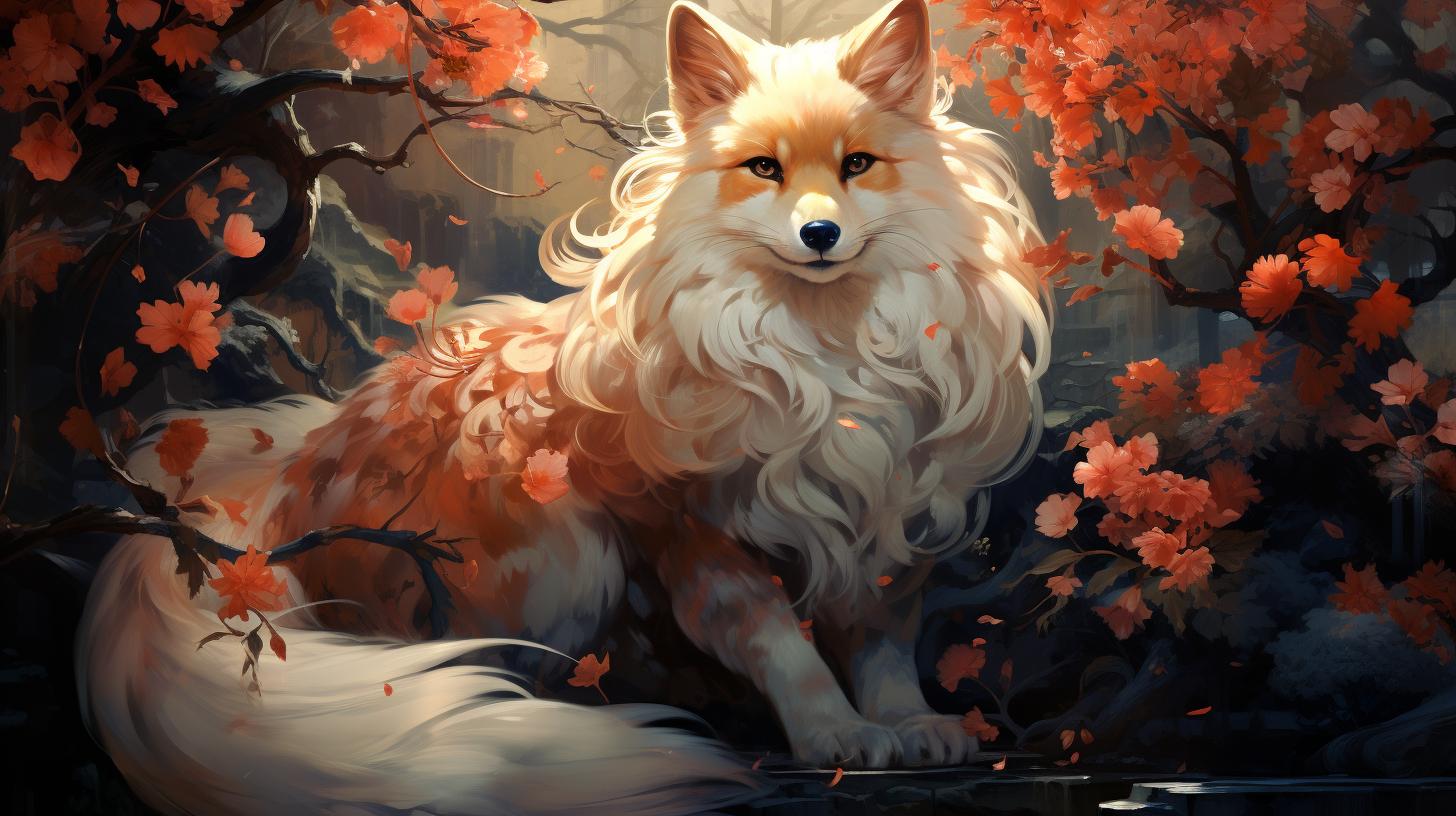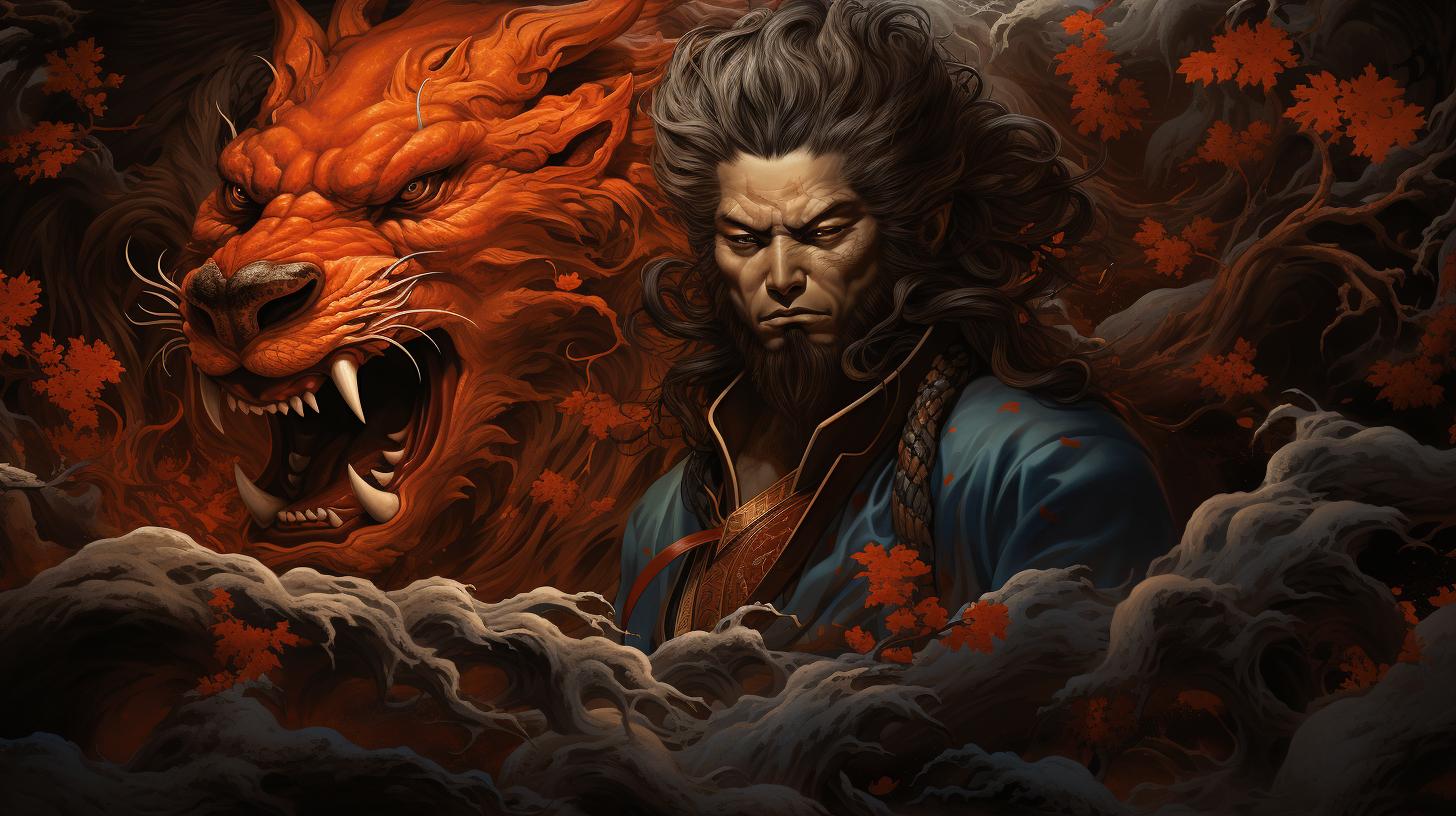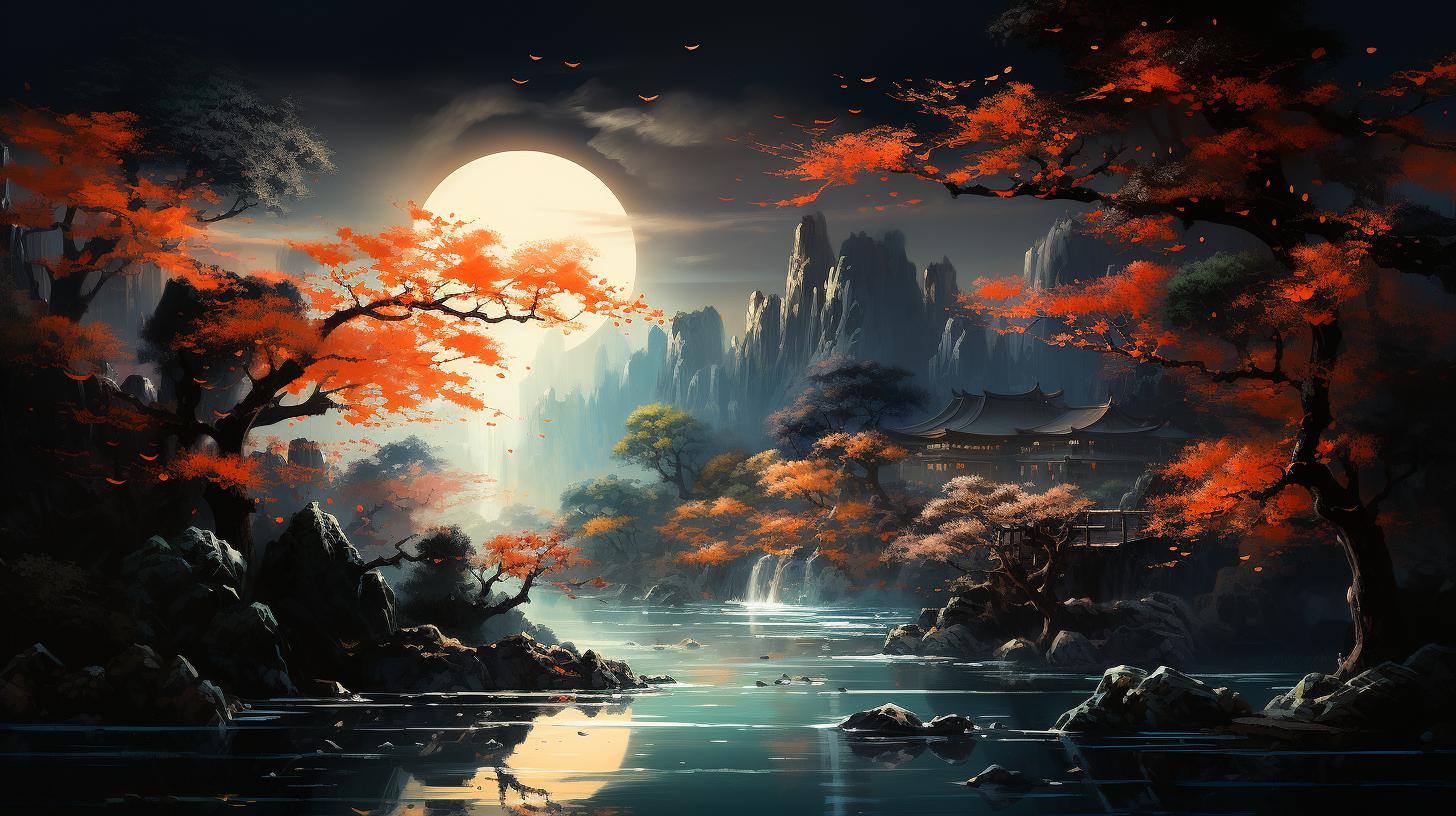Discover the Beauty and Mystery of the Japanese Goddess of Beauty: Kichijoten
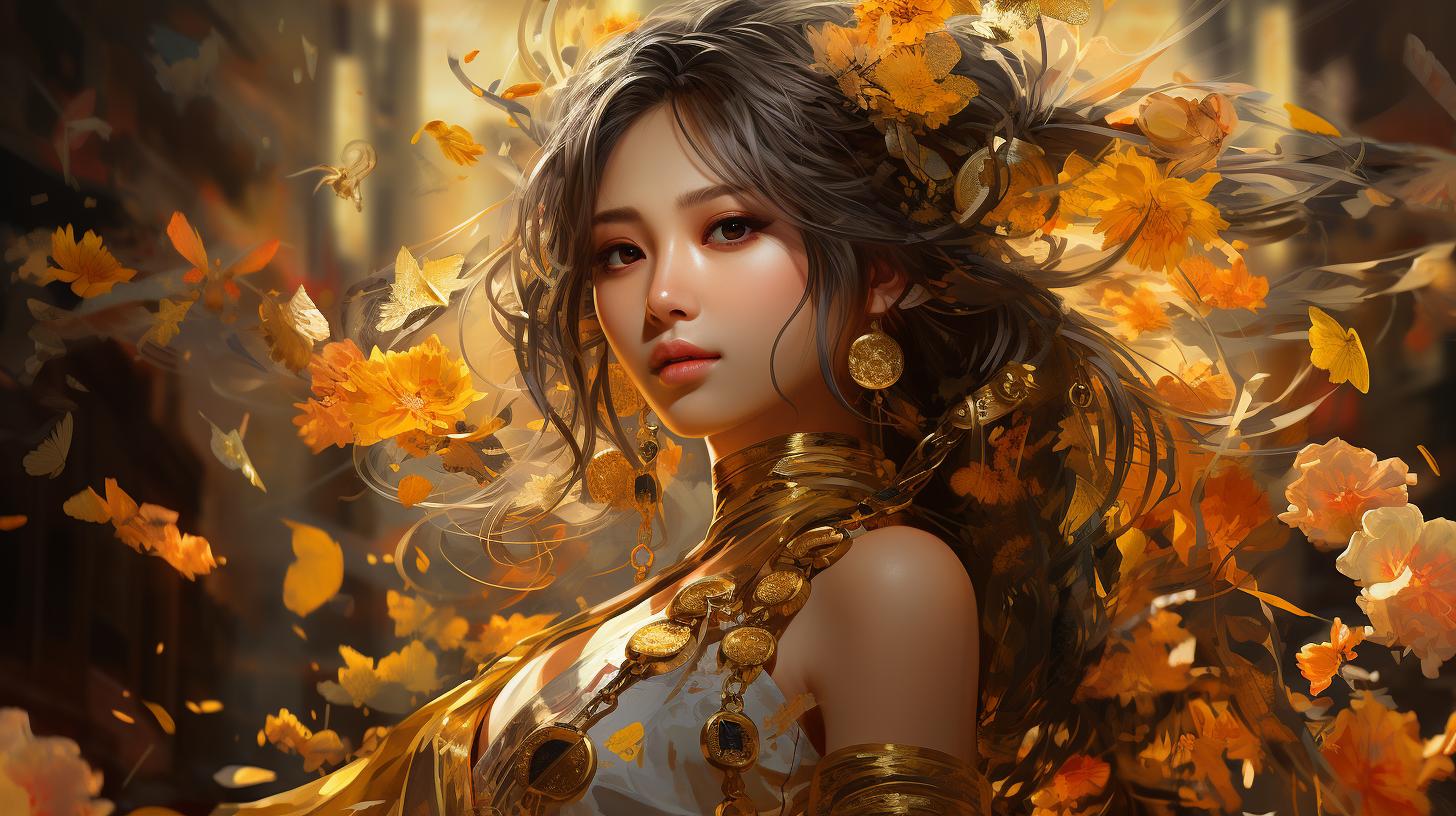
Japanese goddesses have captivated people for centuries with their beauty and mystery. Among them is Kichijoten, the goddess of beauty, fertility, and fortune. She is one of the Seven Gods of Fortune and considered an arbiter of happiness and merit.
Kichijoten’s mythology combines elements of Buddhism and Hinduism. In this article, we’ll delve into the fascinating world of Japanese goddesses and explore Kichijoten’s significance in mythology and modern-day culture.
The Mythical Goddesses of Japan
Japan has a long and rich history of mythology, which includes numerous goddesses. These female deities have played important roles in traditional Japanese beliefs and have been revered for their beauty, power, and influence.
This section explores the origins of Japanese goddesses, their role in Japanese mythology, and the relationship between Japanese and Hindu mythologies.
The Origin of Japanese Goddesses
The origin of Japanese goddesses can be traced back to Shinto mythology, where deities were believed to reside in natural objects and phenomena such as mountains, rivers, and trees. As the mythology evolved, female deities were gradually assigned specific functions and roles in society, representing everything from fertility and childbirth to wisdom and war.
The Role of Goddesses in Japanese Mythology
In Japanese mythology, goddesses have played a vital role in shaping cultural values and beliefs. Often portrayed as nurturing, feminine figures, the goddesses have taught traditional Japanese values such as respect for family and nature.
They have also been invoked for their abilities to grant good fortune, fertility, and success.
The Relationship between Japanese and Hindu Mythologies
Many Japanese goddesses, including Kichijoten, have roots in Hindu mythology. The influence of Buddhism on Japanese culture also resulted in the importation of Hindu gods and goddesses into the Japanese pantheon.
The result has been a fascinating blend of mythologies that has shaped Japanese beliefs about the divine and the relationship between humans and the spiritual world.
- The origin of Japanese goddesses is rooted in Shinto mythology
- Female deities were gradually assigned specific functions and roles in society
- Goddesses have played a vital role in shaping cultural values and beliefs
- Many Japanese goddesses have roots in Hindu mythology
- Buddhism has also influenced Japanese beliefs about the divine
Kichijoten: The Japanese Goddess of Beauty
Kichijoten is a famous Japanese goddess who is known for her beauty, fertility, and fortune.
Her mythology is closely tied to both Hindu and Buddhist traditions, and she is often considered one of the Seven Gods of Fortune in Japan. This section will explore Kichijoten’s origin story, her role in Japanese mythology and the different artistic representations of the goddess.
Introduction to Kichijoten
As mentioned before, Kichijoten is a goddess of beauty, fertility, and fortune. Her name derives from Sanskrit and is associated with the goddess Lakshmi in Indian mythology. In Japan, she is tied to Buddhism and is believed to be associated with Myōken, a deity of the Northern Pole Star and the Big Dipper.
Kichijoten has been worshipped in Japan for over 1300 years, and is considered an arbiter of happiness, fertility, beauty, and fortune.
Kichijoten in Buddhist and Hindu Mythology
Kichijoten has an interesting origin story that evolved through time with the influence of different religious beliefs in Japan. She was originally the wife of the Hindu god Vishnu and considered a version of the goddess Lakshmi.
Later on, in Buddhist mythology, she was associated with Bishamonten, a Buddhist god of war, and often depicted as his sister or consort.
In Japan, Kichijoten is associated with Buddhism, and is usually depicted holding a Wish-Granting Jewel and a lotus. She is revered as a bringer of happiness, beauty, and good fortune, and her images and attributes have been largely supplanted by the Goddess Benzaiten since the 15th century.
Depictions of Kichijoten in Art and Sculpture
Kichijoten has been depicted in many paintings and sculptures throughout Japanese history, including an 8th-century Buddhist painting and an 11th-century wooden idol. Her imagery and attributes have inspired Japanese artists and artisans, and she is often depicted wearing a tiara with an image of a phoenix.
She is known for holding a Wish-Granting Jewel (Hōjyu 宝珠/Cintamani) and a lotus.
In conclusion, Kichijoten is a significant Japanese goddess who has been worshipped for over a millennium. Her beauty, fertility, and fortune have made her a popular figure in Japanese mythology, inspiring artists and artisans throughout history to create beautiful works of art in her honor.
Other Goddesses Associated with Beauty and Fortune in Japan
In addition to Kichijoten, there are many other goddesses associated with beauty and fortune in Japanese mythology. Some of the most notable include Fukurokuju, Bishamonten, and Benzaiten.
Fukurokuju, Bishamonten, and Other Deities
Fukurokuju is another of the Seven Gods of Fortune in Japanese mythology, and is associated with wisdom, wealth, and long life. He is often depicted with a long white beard, a large head and an elongated forehead.
Bishamonten, on the other hand, is a god of war, wealth, and fortune. He is one of the Four Heavenly Kings of Buddhism and was born from the eye of the primordial god Dainichi Nyorai.
Another notable deity is Inari, who is a god or goddess of agriculture, fertility, and foxes. Inari is often depicted as a young woman or as a fox with a prominent tail and multiple tails.
Representation of Feminine Beauty in Japanese Deities
Many of the goddesses associated with beauty and fortune in Japan are depicted with striking visual features that represent femininity and beauty. For instance, many of these goddesses are depicted wearing ornate clothing and jewelry, with long hair that cascades down their backs.
Furthermore, they are often depicted holding symbols and objects associated with beauty and good fortune, such as jewels, lotuses, and peaches.
The Role of Benzaiten and Other Lucky Gods
Benzaiten is a goddess of good fortune, the arts, and knowledge. She is also often associated with water, and is sometimes referred to as the goddess of the sea. Benzaiten is often depicted playing a musical instrument called the biwa, and is associated with poetry, music, and literature.
Other lucky gods and goddesses in Japanese mythology include Daikoku, who is a god of wealth and prosperity, and Hotei, who is also a god of wealth, and is often depicted laughing and carrying a large bag of treasure over his shoulder.
Overall, the goddesses associated with beauty and fortune in Japan represent a diverse and complex set of beliefs about what it means to be lucky, prosperous, and beautiful. Their mythology draws from multiple cultural and religious traditions, and they continue to play an important role in Japanese culture and society today.
The Significance of Kichijoten and Other Goddesses in Modern Japan
Worship and Festivals Dedicated to Japanese Goddesses
Japanese goddesses hold an important place in the country’s culture and history, and they are still worshipped today. There are many festivals dedicated to goddesses, such as the Kichijoten Festival, which takes place in Kyoto every October.
During this festival, people visit the Joruri-ji temple to pray to Kichijoten and take part in various activities, including art exhibitions and tea ceremonies. Other popular goddess festivals include the Benzaiten Festival in Okinawa and the Inari Festival in Kyoto.
How Goddesses Impact Japanese Culture
Japanese goddesses have influenced Japanese culture in many ways, including art, literature, and music. They have also inspired various traditional practices, such as flower arranging and tea ceremonies. However, the impact of Japanese goddesses extends beyond traditional practices and has also influenced more modern cultural phenomena, such as anime and manga.
In these forms of entertainment, goddesses are often depicted as powerful and beautiful beings who inspire strength, grace, and wisdom.
Controversies Surrounding the Worship of Kichijoten
Despite the popularity of Kichijoten and other Japanese goddesses, there have been some controversies surrounding their worship. One of the main issues is the misinterpretation of images of Kichijoten and other goddesses in anime and manga.
Some depict the goddesses in overly sexual or provocative ways, which has led to concerns about the objectification of women and the trivialization of Japanese culture. Another issue is the lack of understanding about the true significance of these goddesses, with some people viewing them solely as objects of beauty rather than symbols of deeper meaning and spirituality.
The Continued Relevance of Japanese Goddesses
Despite these controversies, Japanese goddesses continue to hold a significant place in modern Japanese society. They represent not only beauty and grace but also strength, fertility, and fortune. Their worship is an important aspect of Japanese culture, and their influence can be seen in various forms of art, music, and literature.
As Japanese society continues to evolve and change, the worship of goddesses like Kichijoten will undoubtedly continue to play an important role in shaping culture and identity.
The Importance of Worshiping Japanese Goddesses
Kichijoten and other Japanese goddesses continue to be revered in modern Japan. In a country where traditional customs and beliefs still hold significant value, the worship of deities like Kichijoten is seen as an important cultural practice.
The goddess’s association with beauty, fertility, and fortune makes her relevant to people’s daily lives, and many Japanese still pray to her and other goddesses in hopes of receiving blessings and good luck.
Integration of Japanese Goddesses in Popular Culture
Japanese goddesses have also found a place in modern popular culture. Many anime and manga series feature depictions of goddesses like Kichijoten, and her image has become synonymous with beauty and femininity.
Pop stars often incorporate imagery and costumes inspired by Japanese goddesses into their performances, further cementing their place in popular culture.
Future of Japanese Goddess Worship
The continued relevance of Japanese goddesses is likely to persist in the future. While modernization and globalization have shifted Japanese society toward a more secular approach, many people still value traditional beliefs and customs.
Japanese goddesses like Kichijoten continue to inspire awe and reverence, and their legacy is likely to endure for generations to come. As Japan navigates a rapidly changing cultural landscape, the worship of goddesses like Kichijoten may provide a connection to the country’s rich cultural history and traditions.
Summary
The worship of Japanese goddesses like Kichijoten remains an important cultural practice in modern Japan. Their association with beauty, fertility, and fortune makes them relevant to people’s daily lives, and they continue to inspire awe and reverence.
As Japanese society shifts toward a more secular approach, the worship of goddesses may provide a connection to the country’s rich cultural history, ensuring their legacy endures for generations to come.
…












